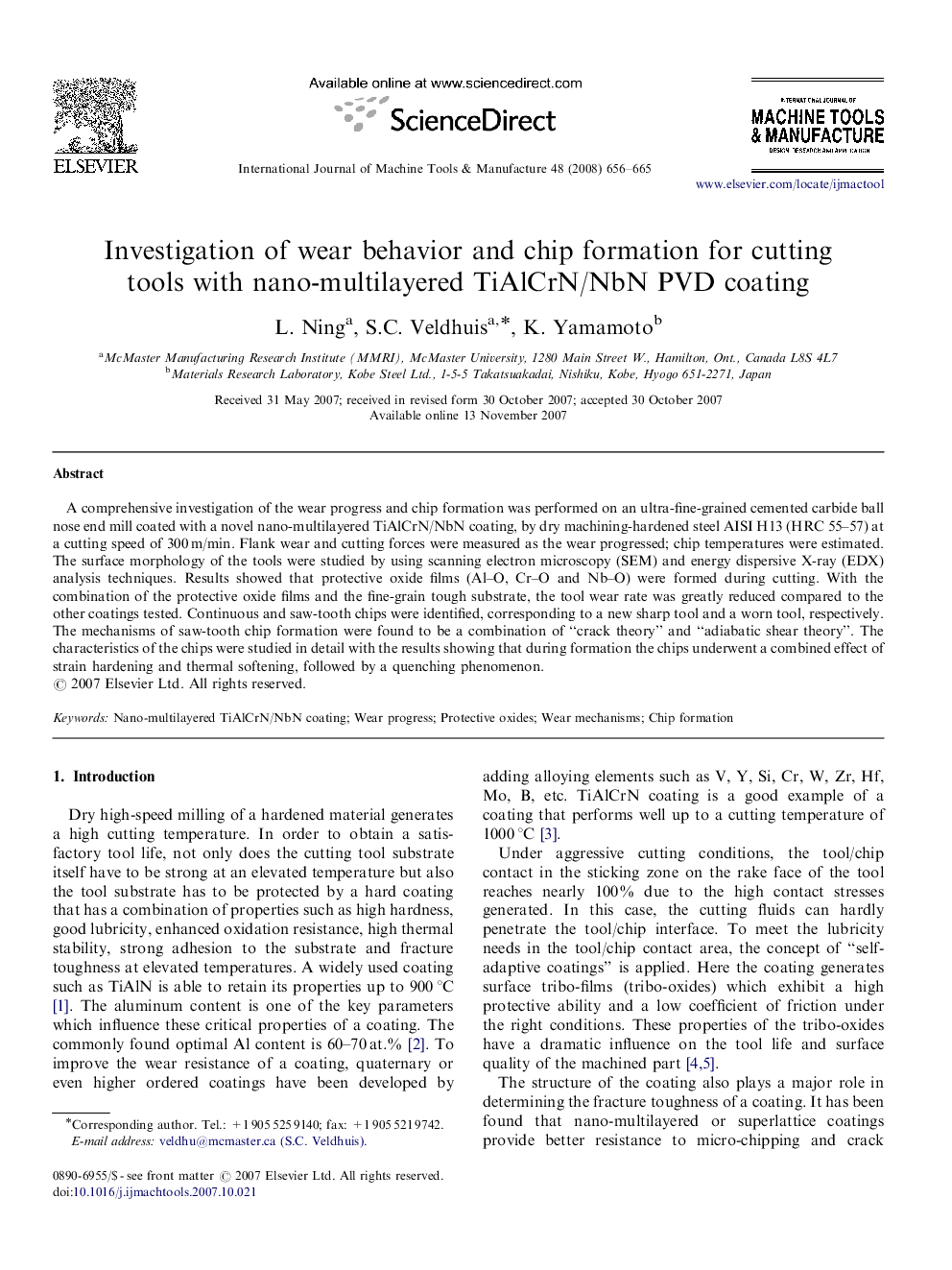| Article ID | Journal | Published Year | Pages | File Type |
|---|---|---|---|---|
| 781076 | International Journal of Machine Tools and Manufacture | 2008 | 10 Pages |
A comprehensive investigation of the wear progress and chip formation was performed on an ultra-fine-grained cemented carbide ball nose end mill coated with a novel nano-multilayered TiAlCrN/NbN coating, by dry machining-hardened steel AISI H13 (HRC 55–57) at a cutting speed of 300 m/min. Flank wear and cutting forces were measured as the wear progressed; chip temperatures were estimated. The surface morphology of the tools were studied by using scanning electron microscopy (SEM) and energy dispersive X-ray (EDX) analysis techniques. Results showed that protective oxide films (Al–O, Cr–O and Nb–O) were formed during cutting. With the combination of the protective oxide films and the fine-grain tough substrate, the tool wear rate was greatly reduced compared to the other coatings tested. Continuous and saw-tooth chips were identified, corresponding to a new sharp tool and a worn tool, respectively. The mechanisms of saw-tooth chip formation were found to be a combination of “crack theory” and “adiabatic shear theory”. The characteristics of the chips were studied in detail with the results showing that during formation the chips underwent a combined effect of strain hardening and thermal softening, followed by a quenching phenomenon.
